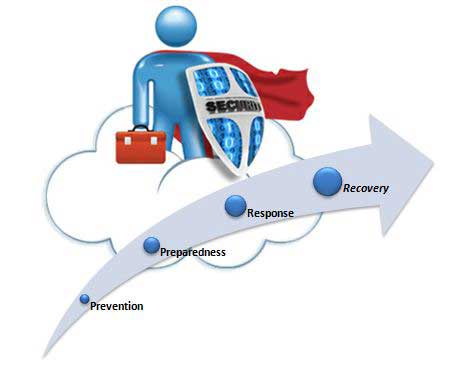Unpredictability is a fact of life. Whether cataclysmic weather, server failure or simply a backhoe cutting a power cable or fiber cable, enterprises never know when their operations may be threatened.
Don’t fool yourself…ALL telecommunication networks are vulnerable to disasters. Knowing the types of disasters that effect telecommunications within your company and taking appropriate action ahead of time – will minimize your exposure. Make sure your company has a telecommunications data and voice disaster recovery plan in place, tested and ready to implement should any disaster occur.

TrueTel has business relationships with over 500 Data Centers Nationwide, and can help you leverage existing Data Center infrastructure and expertise to deploy your Disaster Recovery (DR) and Business Continuity Plans (BCP) much more cost effective than building your own – and will be implemented faster as well as more cost efficient than you could do it yourself.
Disaster Recovery is essentially defined as:
(1) The use of alternative/secondary network infrastructure to re-establish communications in the event that the primary infrastucture is out of service, and
(2) The methods and procedures for returning an organization to full operation after a catastrophic interruption (e.g., including recovery of lost data).

There is not a “one-size-fits-all” disaster recovery plan. Instead, there are three basic strategies that are inclusive in all disaster recovery plans:
(1) Preventive Measures
Preventive measures seek to identify and reduce risks, designed to mitigate or prevent an event from happening. These measures may include keeping data backed up and off site, using surge protectors, installing generators, keeping spare components on hand, conducting routine inspections, etc.
(2) Detective Measures
Detective measures are taken to identify potential threats within the IT infrastructure. These measures include using up-to-date antivirus software, holding employee training sessions, and installing server and network monitoring software, etc.
(3) Corrective Measures
Corrective measures are taken to restore service as quickly as possible following a disaster.
The nature of your business and its physical environment will influence the types of threats an organization might face. The cost of a DR Plan should be balanced against the tolerance for system downtime – the less downtime that can be tolerated, the more it will cost to create an appropriate response. Some network systems (and locations) must be restored within minutes or seconds, while others can be down a few hours, and still others can be down for a few days without serious consequences.
A Disaster Recovery plan can be as simple as backing up critical files, or as complex as creating a mirror/duplicate of the original business site, with full computer systems to be resilient in the case of any host or disk failure.
Following a disaster, businesses can resume to normal operations in a matter of hours with minimal losses….and if there is sufficient budget, a Disaster can be completely avoided by mirroring and replicating critical business applications and user data.
DR plans come in many flavors/configurations, depending on customer requirements and what their budget can support.
Disaster Recovery-as-a-service (DRaaS) solutions are gaining customer adoption, predominantly from small and midsize organizations.
